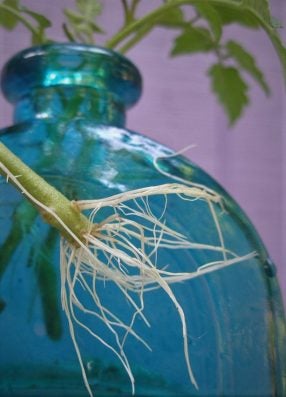Watering plants is a balancing act
Published 1:00 pm Sunday, June 19, 2022

- OLYMPUS DIGITAL CAMERA
|
Getting your Trinity Audio player ready...
|
Funny to me how so many home lawns and shrubs are watered every week or more, yet the same plants in schoolyards thrive on nothing but rainwater. Yet some plants are easily killed with too much water, though their stem cuttings can root and grow in just water.
The first is a simple matter of watering plants that need it really well but only when they need it, rather than sticking to a regular schedule or watering too often “just in case.”
Most free-range trees and shrubs, perennial flowers, and even lawns can obviously make it from rain to rain, but certainly benefit from an extra soaking every now and then. However, due to restricted roots, most plants grown in sandy or compacted soil, small flower beds, and pots need more frequent watering or they simply die.
So, as my dear friend and fellow retired Extension horticulturist Carol Reese, put it, “Watering is a balancing act.” Garden center employees and old-hand gardeners can usually tell with just a look which plants need watering the soonest and which can wait another day. We also understand that new transplants need more attention, and that big leaf plants like hydrangeas wilt naturally during hot, breezy days to conserve moisture so we avoid overwatering which can cause root rot.
However, it takes time for less experienced gardeners to get to know their soil and plants, and get a feel for when they are either still saturated or dragging their tongues in the dust. This only comes from observation and regularly checking the soil.
One of the problems with watering is that dry soil resists being rewet. Notice how potting soil pulls away from the pot when it’s dry, and water just swirls around and out the bottom hole? To get around this, Carol and I both water twice, a few minutes apart, first to get soil to swell back up and better absorb and hold a second, deeper watering. And we mulch everything, even in pots, to keep soil cooler, moist, and better able to absorb new water with less run off.
Another trick Carol recommends is the “leaky bucket” trick. Any plastic container that you can poke a small hole in will let water slowly trickle in over several minutes or more, even for potted plants. “It looks tacky,” she admits, “but is effective.”
And while watering in the morning is best, don’t worry about occasionally watering in the middle of the day or late afternoon unless you do it too often. Just water when you can.
Now back to those plants whose cuttings root easily in water, including impatiens, coleus, sweet potato, tomato, begonia, Africa violet, basil, mint, avocado seeds, althaea (rose of Sharon), gold dust aucuba…the list goes on. Even drought-hardy rosemary and desert succulents like sedums, both easy to kill by overwatering in the garden, root readily in water.
Why don’t they die from root rot? Roots aren’t like drinking straws, don’t slurp water and nutrients; they are covered in microscopic “hair roots” that absorb water and nutrients one ion at a time. Unlike thick, branched roots in soil, thin, delicate water roots have more hair roots and aerenchyma (airy tissue in roots that allow gas exchange), so they can extract more oxygen that naturally dissolves in water.
But they don’t grow well for long, which is why that “lucky bamboo” in your vase is stunted compared with its six-foot tall, bushy potting soiled counterpart.
Bottom lines: Plant that rooted cutting in real soil, then water it like garden plants – twice, really well, but only as needed. And mulch.
Felder Rushing is a Mississippi author, columnist, and host of the Gestalt Gardener on MPB Think Radio. Email gardening questions to rushingfelder@yahoo.com.





